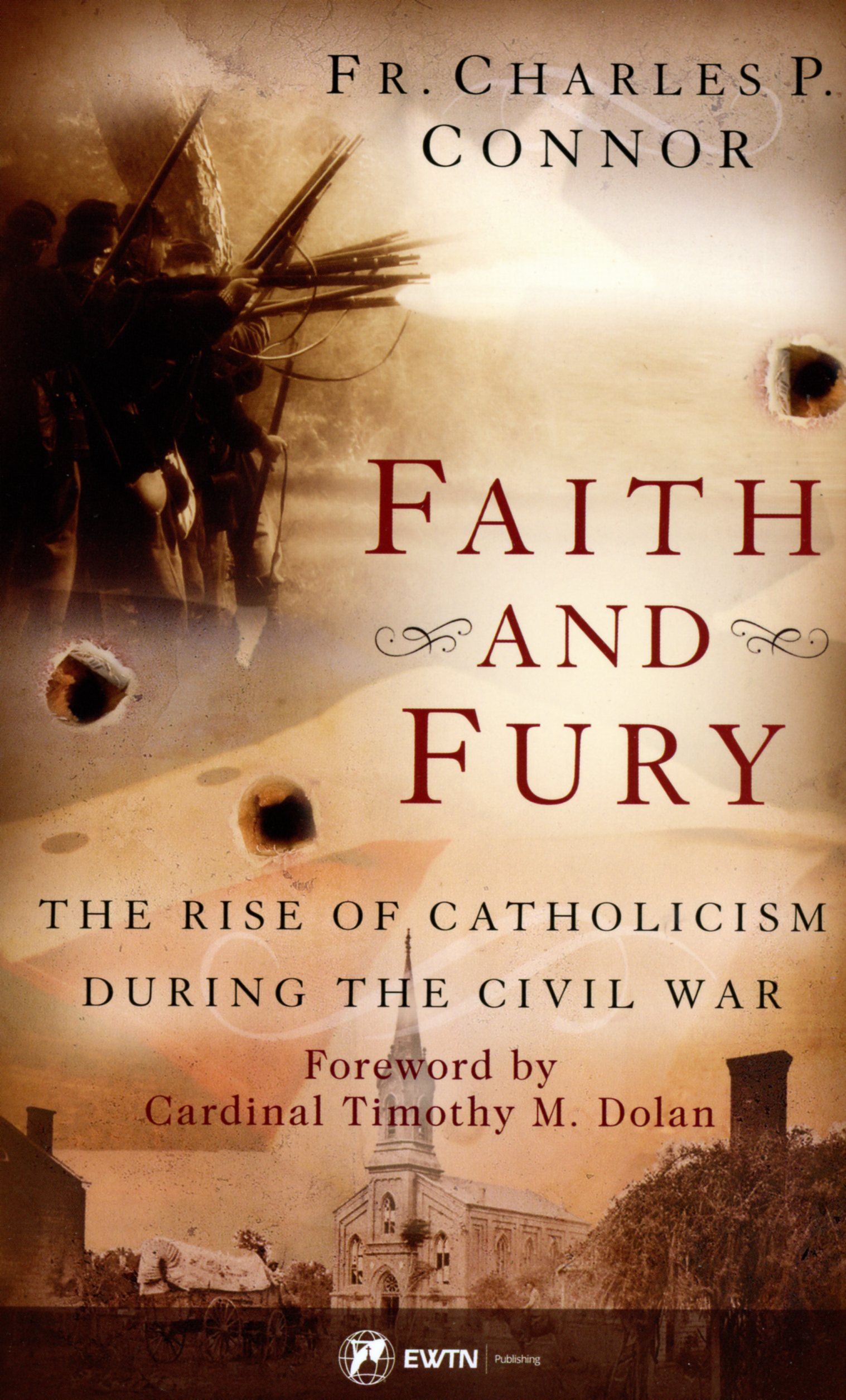
By Nancy L. Roberts
ALBANY — “Faith and Fury” aptly describes the atmosphere that 19th-century American Catholics must have experienced.
Then, waves of Irish and German Catholic immigrants invigorated the church and also encountered nativist rage and violence from the Protestant majority.
Debates about slavery’s morality swirled everywhere, not only in the halls of government but also in the churches. There was no respite from sharply divisive conflicts and moral soul-searching. When war finally came in 1861, Catholics on both sides, convinced of their righteousness, implored God to grant them victory.
These are just a few of the fascinating strands that this readable introduction to 19th-century U.S. Catholic history weaves together. The author, Father Charles P. Connor, is a professor of theology and church history at Mount St. Mary’s Seminary, Emmitsburg, Maryland, who has written many well-received books about U.S. Catholic history. He adroitly balances storytelling and scholarship in his account of this most turbulent period.
As the number of Catholic immigrants soared, Father Connor writes, “they were seen only as the strange Catholic foreigners whose ecclesial body was set upon depriving America of her rights and liberties, and whose pope was all too ready to assume command either from Rome or perhaps from America’s own shores.”
On the eve of the Civil War, despite such opposition, Catholics had succeeded in establishing a strong foothold in the United States, “developing institutions and producing notable bishops, priests, religious and laity.”
In the sectional differences that seethed over the issue of slavery, Catholics figured prominently on both sides. It was a practicing Catholic, Chief Justice Roger Taney of Maryland, who handed down the decision in the 1857 Dred Scott case, one that was cheered by Southern slaveholders.
Yet as early as 1815, St. Elizabeth Seton, founder of the Sisters of Charity, noted in her diary her efforts to give first Communion instruction to poor black children in Emmitsburg, Maryland.
And Father Stephen Badin, the “apostle of Kentucky” and the first priest ordained in the United States, was ministering to slaves on the frontier as early as 1805. Father Connor cites a letter the evangelist wrote in which he lamented that slaves were treated “almost like animals,” and fed and clothed “meagerly.”
Yet popes had long and vigorously decried the institution of slavery, as did Pope Eugene IV in 1435 in a papal bull, “Sicut Dudum.” But as Father Connor shows, the American bishops themselves succumbed to social mores and indeed, many themselves owned slaves, as did prominent lay Catholics. Still, both clergy and laypeople also made efforts to manumit their slaves.
In his will, Archbishop John Carroll of Baltimore directed the manumission of his “black servant Charles” and bequeathed him the sum of $50.
For those unacquainted with Catholic history in the Civil War era, “Faith and Fury” is an excellent starting point. Well researched and engagingly written, it shows both the strengths and weaknesses of Catholicism in this difficult phase of American history…
Roberts directs the journalism program at the University at Albany, SUNY.
